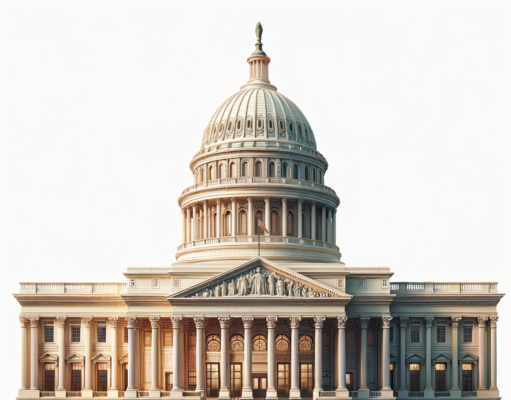Unveiling the Latest State Policy Updates: Shocking Changes Ahead!
In a rapidly evolving socio-political landscape, state policy updates play a crucial role in shaping the lives of residents and the operational frameworks of businesses. Recent announcements from various state governments have unveiled significant policy changes that are set to redefine the regulatory environment. This article delves into the context of these updates, highlights the major changes, analyzes their implications, gathers expert opinions, and captures public responses, while also looking ahead to future trends in governance.
Understanding the Context: The Importance of State Policy Updates in Today’s Landscape
State policy updates are essential for adapting to the dynamic needs of society, particularly in times of economic uncertainty and social change. As states grapple with issues such as public health, economic recovery, environmental sustainability, and social equity, timely policy adjustments become imperative. These updates not only reflect the priorities of state governments but also signal their responsiveness to the concerns of constituents. In an era marked by rapid technological advancements and shifting demographics, understanding the context of these changes is vital for residents and businesses alike, as they navigate the complexities of compliance and adaptation.
Key Highlights: Major Changes in State Policies You Need to Know About
Recent policy updates across several states have introduced sweeping changes that are garnering attention. Notably, states have implemented new regulations on carbon emissions, mandating stricter limits for industries to combat climate change. Additionally, significant reforms in healthcare policy aim to expand access to services, particularly for underserved communities. Another area of focus is the overhaul of tax structures, with some states introducing progressive tax rates to address income inequality. Furthermore, changes in labor laws, including the redefinition of gig economy worker classifications, are poised to impact employment practices significantly. These highlights underscore a trend towards more progressive and inclusive governance.
Analyzing the Implications: How These Policy Updates Will Affect Residents and Businesses
The implications of these policy updates are far-reaching, affecting both residents and businesses in various ways. For residents, the new healthcare reforms promise improved access to essential services, potentially leading to better health outcomes. However, the increased regulatory burden on businesses, particularly in terms of environmental compliance, may lead to higher operational costs. Small businesses, in particular, could face challenges in adapting to these changes, which may stifle innovation and growth. Additionally, the reclassification of gig workers could result in increased costs for companies relying on flexible labor, ultimately affecting pricing structures and service availability. As these policies take effect, the balance between social equity and economic viability will be a critical area of focus.
Expert Opinions: Insights from Policy Analysts on the Recent Developments
Policy analysts have expressed a range of opinions regarding the recent updates, highlighting both the potential benefits and challenges. Dr. Emily Carter, a leading policy analyst at the Institute for State Governance, emphasizes the importance of these changes in promoting social equity. “The new healthcare policies are a step in the right direction, aiming to bridge the gap in access to services,” she notes. However, she also cautions that “the implementation phase will be crucial; without adequate support for businesses, we may see unintended consequences.” Similarly, economist Dr. James Liu points out that while progressive tax structures can address income inequality, they may also deter investment if not carefully calibrated. The insights from these experts underscore the complexity of policy implementation and the need for ongoing evaluation.
Public Response: Community Reactions to the Shocking Policy Changes Unveiled
Community reactions to the unveiled policy changes have been mixed, reflecting a spectrum of opinions across different demographics. Advocacy groups have largely welcomed the healthcare reforms and environmental regulations, viewing them as essential steps towards a more equitable society. However, business associations have voiced concerns about the potential economic impact, arguing that the new regulations could hinder growth and job creation. Social media platforms have become a battleground for debate, with residents expressing both support and opposition to the changes. Town hall meetings have been organized in several communities, providing a platform for residents to voice their concerns and suggestions, illustrating the active engagement of citizens in the democratic process.
Looking Ahead: Anticipating Future Trends in State Policy and Governance
As states implement these significant policy changes, it is essential to anticipate future trends in governance. The current trajectory suggests an increasing emphasis on sustainability and social equity, with states likely to adopt more comprehensive approaches to address climate change and public health. Additionally, the integration of technology in governance, such as digital platforms for public engagement and data-driven policy-making, is expected to gain momentum. Furthermore, as states navigate the complexities of post-pandemic recovery, there may be a shift towards more collaborative governance models that involve stakeholders from various sectors. The evolving landscape of state policy will require continuous monitoring and adaptation to ensure that the needs of all constituents are met.
In conclusion, the recent state policy updates represent a significant shift in governance, reflecting the evolving priorities of society. While these changes promise to enhance social equity and environmental sustainability, they also pose challenges that require careful consideration and implementation. As residents and businesses adapt to this new regulatory landscape, ongoing dialogue and engagement will be crucial in shaping the future of state governance. The coming months will be pivotal in determining the long-term impacts of these policies, making it essential for all stakeholders to remain informed and involved in the process.


























































